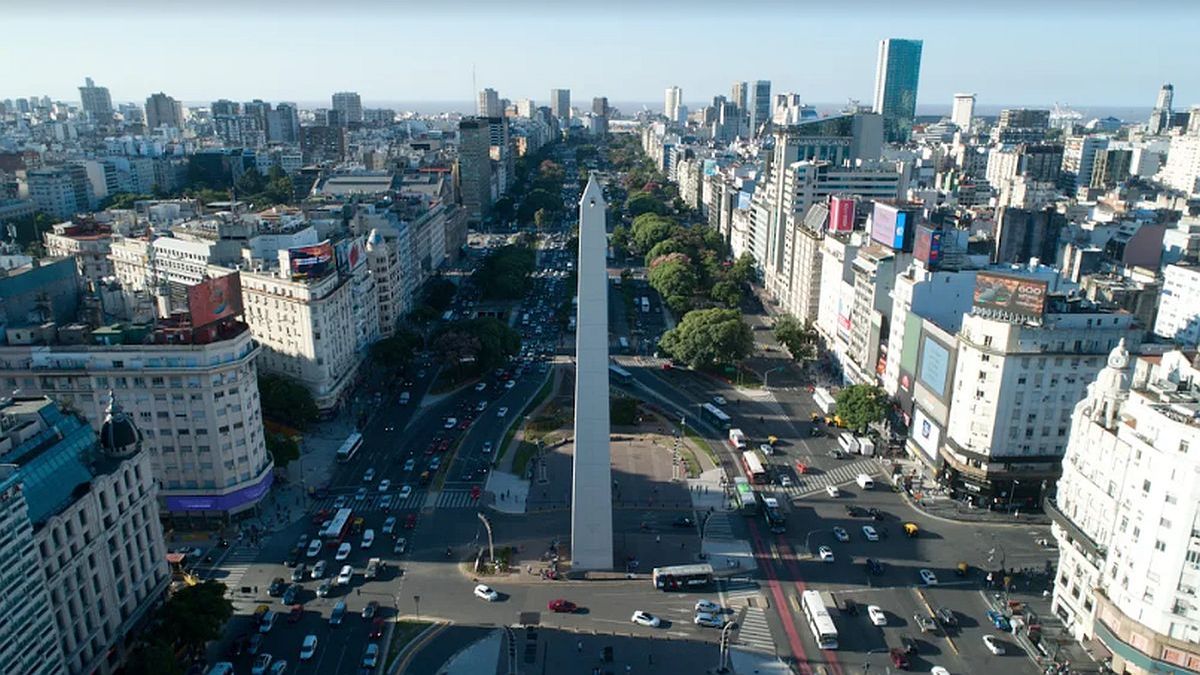One day, October 12, 1937, the City of Buenos Aires was transformed by the inauguration of Avenida 9 de Julio. As if he were awarded the honorary diploma of Big City.
The previous year, a construction had been erected that would give its own personality, not only to the avenue, but also to the entire City: The Obelisk.
In December 1880, the City of Buenos Aires had been declared the capital of the Argentine Republic.
And an event, which to some extent served to give this City a defined personality, was the inauguration of the Obelisk.
In that year 1936, the Argentine capital, 400 years after its first foundation by Pedro de Mendoza, did not seem to feel the weight of those years.
Because as in the life of the human being, “what has been lived, although it is lost, is also gained”.
Also falling at that time, old colonial houses, streets were widened, new skyscrapers pointed to the sky. And in the bowels of the land of Buenos Aires, underground, the underground, like metal caterpillars, ran through it quickly.
Everything that meant progress was overcoming the resistance of the old inhabitants of Buenos Aires who looked with pity at the empty lots, which they would later occupy, surely apartment buildings, and they were not mistaken.
Perhaps the porteños continued to yearn for their old houses, already demolished, in which dreams, memories, happy hours would remain forever.
They are the moments in which we all understand that “it is not time that passes, it is we who pass through time”.
And on that day of May 23, 1936, when the Obelisk was inaugurated, it had already been several years since the “Corrientes Angosta” had been disappearing in some sections, so pleasant to memories.
But a big city cannot live totally clinging to its sentimentality. You have other emergencies.
The last redoubts of the past were falling. The pickaxe did not rest.
And in what is now the Plaza de la República, a wide clearing opened up in what had been a dense concentration of low houses, old theaters, famous cafes.
Of cafes where bohemia was practiced, that bohemia that was born even before the beginning of the 20th century.
It was Saturday that day, May 23, 1936. And in the brand new Plaza de la República, it seemed that all the inhabitants of Buenos Aires had gathered.
At 3 p.m. The official ceremony began. Emotion, solemnity.
The first magistrate presided over the ceremony. The Municipal Band performed the National Anthem.
Thousands of voices, including those of the boys from the schools, formed a fervent chorus. And the voices of those boys had a significant resonance. They seemed to announce and greet the great city of the future at the same time.
At 3:30 p.m. sharp, the ribbons were symbolically cut and the new section of the widening of Corrientes Street and the great Obelisk were simultaneously declared inaugurated.
The obelisk!. This would be the involuntary victim of the inexhaustible ingenuity of Buenos Aires, which with humor devoid of malice, made this mass a passive subject of jokes, which many theater stages collected and amplified.
But beyond this humorous aspect – which is anecdotal – there was something deeper. A new stage, portentous and infinite, was being born for the city of Buenos Aires. And within it that Obelisk, which with the classic lines with which it had been erected, would be with the passing of time, the most authentic document of a city with personality, large, strong and thriving.
And -curiously- that day May 23, 1936, the fourth centenary of the First Foundation of Buenos Aires was also celebrated, which ratified that that distant day of 1536, with the foundation of the Port of Santa María del Buen Ayre, began in the banks of the Plata, a civilizing landmark.
And since then, Buenos Aires with its greatness, extends its arms to all the peoples of the world. And she does it with noble, generous and fraternal sentiments.
The ceremony over, the voices died away.
The river of human beings slowly receded like a gigantic wave that was diluted towards the hundred neighborhoods of Buenos Aires. Its inhabitants understood that from that day the Great Village would begin its definitive destiny as a Great City. Many were left thinking, without a doubt, that the incessant progress that was making Buenos Aires one of the most important cities in the world and the true pride of all Argentines would no longer be extinguished. Because “There are flames that, lit, cannot be extinguished”.
Source: Ambito




